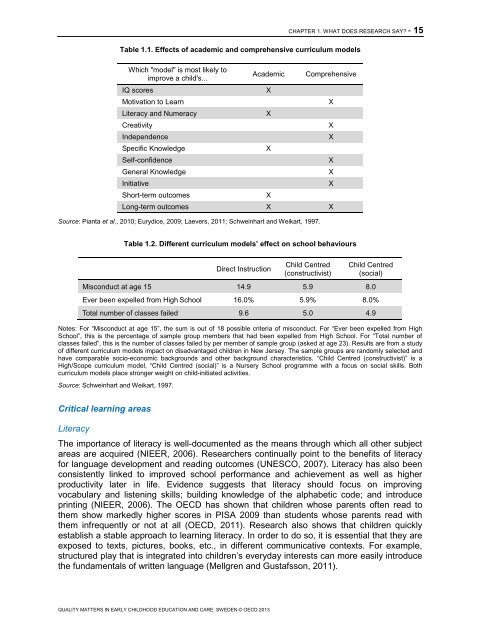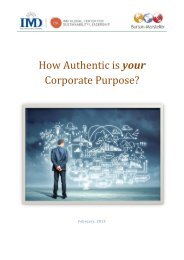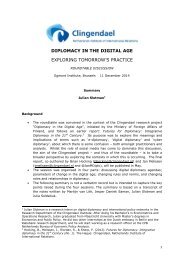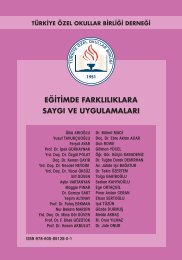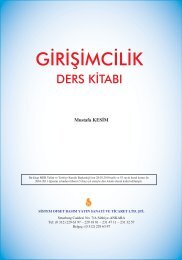SWEDEN%20policy%20profile%20-%20published%2005-02-2013
SWEDEN%20policy%20profile%20-%20published%2005-02-2013
SWEDEN%20policy%20profile%20-%20published%2005-02-2013
You also want an ePaper? Increase the reach of your titles
YUMPU automatically turns print PDFs into web optimized ePapers that Google loves.
QUALITY MATTERS IN EARLY CHILDHOOD EDUCATION AND CARE: SWEDEN © OECD <strong>2013</strong><br />
CHAPTER 1. WHAT DOES RESEARCH SAY? - 15<br />
Table 1.1. Effects of academic and comprehensive curriculum models<br />
Which "model" is most likely to<br />
improve a child's...<br />
IQ scores X<br />
Academic Comprehensive<br />
Motivation to Learn X<br />
Literacy and Numeracy X<br />
Creativity X<br />
Independence X<br />
Specific Knowledge X<br />
Self-confidence X<br />
General Knowledge X<br />
Initiative X<br />
Short-term outcomes X<br />
Long-term outcomes X X<br />
Source: Pianta et al., 2010; Eurydice, 2009; Laevers, 2011; Schweinhart and Weikart, 1997.<br />
Table 1.2. Different curriculum models’ effect on school behaviours<br />
Direct Instruction<br />
Child Centred<br />
(constructivist)<br />
Child Centred<br />
(social)<br />
Misconduct at age 15 14.9 5.9 8.0<br />
Ever been expelled from High School 16.0% 5.9% 8.0%<br />
Total number of classes failed 9.6 5.0 4.9<br />
Notes: For “Misconduct at age 15”, the sum is out of 18 possible criteria of misconduct. For “Ever been expelled from High<br />
School”, this is the percentage of sample group members that had been expelled from High School. For “Total number of<br />
classes failed”, this is the number of classes failed by per member of sample group (asked at age 23). Results are from a study<br />
of different curriculum models impact on disadvantaged children in New Jersey. The sample groups are randomly selected and<br />
have comparable socio-economic backgrounds and other background characteristics. “Child Centred (constructivist)” is a<br />
High/Scope curriculum model, “Child Centred (social)” is a Nursery School programme with a focus on social skills. Both<br />
curriculum models place stronger weight on child-initiated activities.<br />
Source: Schweinhart and Weikart, 1997.<br />
Critical learning areas<br />
Literacy<br />
The importance of literacy is well-documented as the means through which all other subject<br />
areas are acquired (NIEER, 2006). Researchers continually point to the benefits of literacy<br />
for language development and reading outcomes (UNESCO, 2007). Literacy has also been<br />
consistently linked to improved school performance and achievement as well as higher<br />
productivity later in life. Evidence suggests that literacy should focus on improving<br />
vocabulary and listening skills; building knowledge of the alphabetic code; and introduce<br />
printing (NIEER, 2006). The OECD has shown that children whose parents often read to<br />
them show markedly higher scores in PISA 2009 than students whose parents read with<br />
them infrequently or not at all (OECD, 2011). Research also shows that children quickly<br />
establish a stable approach to learning literacy. In order to do so, it is essential that they are<br />
exposed to texts, pictures, books, etc., in different communicative contexts. For example,<br />
structured play that is integrated into children’s everyday interests can more easily introduce<br />
the fundamentals of written language (Mellgren and Gustafsson, 2011).


